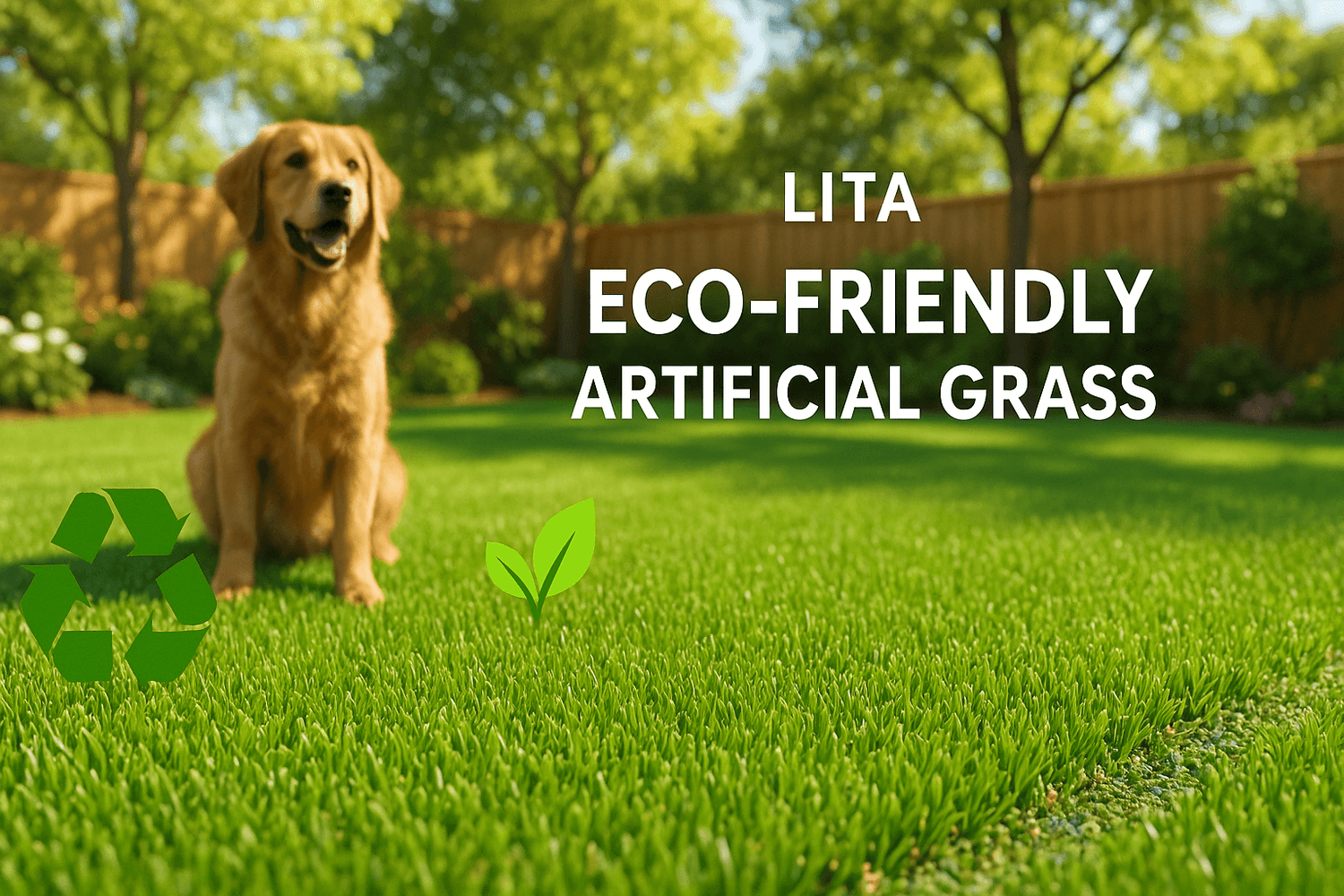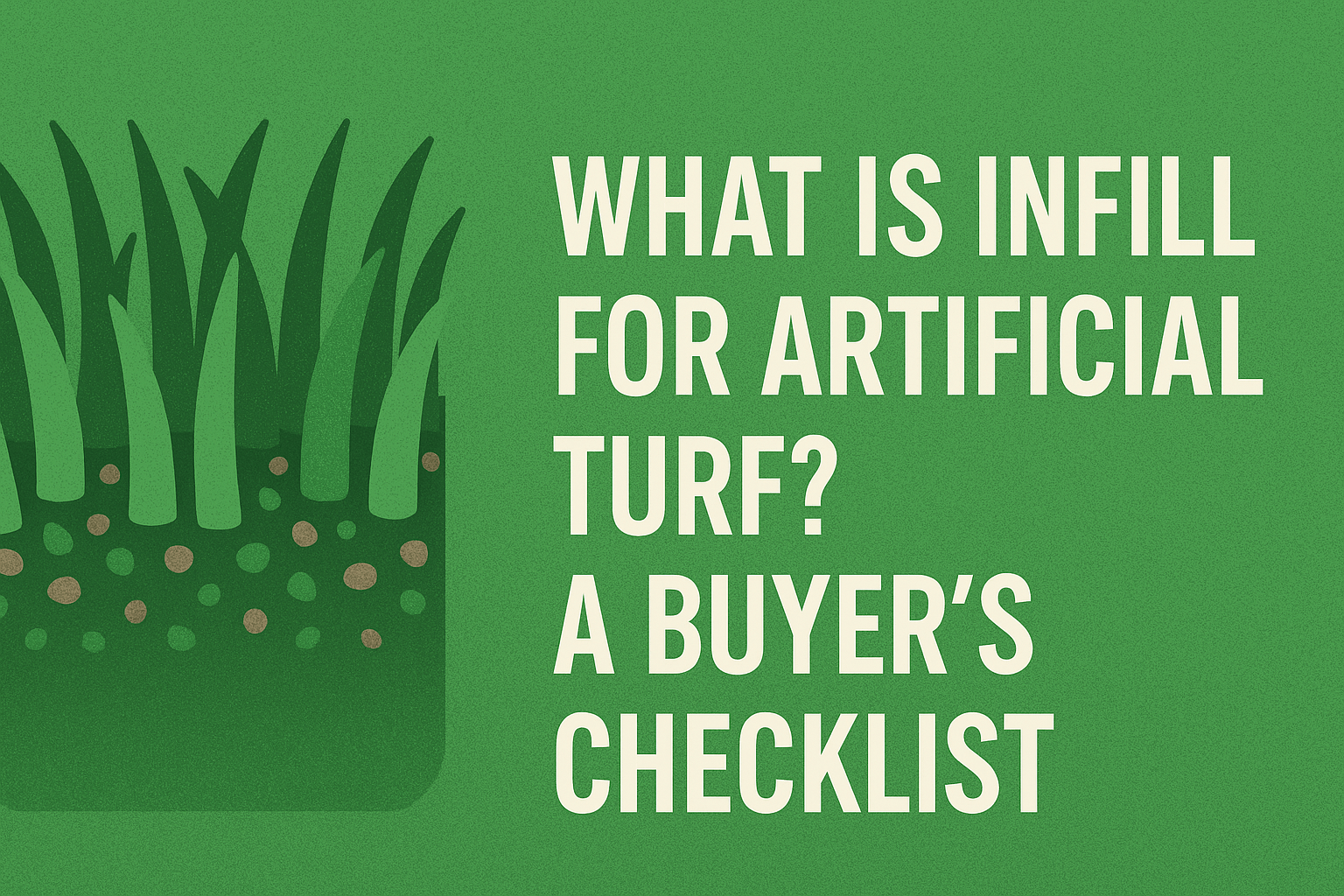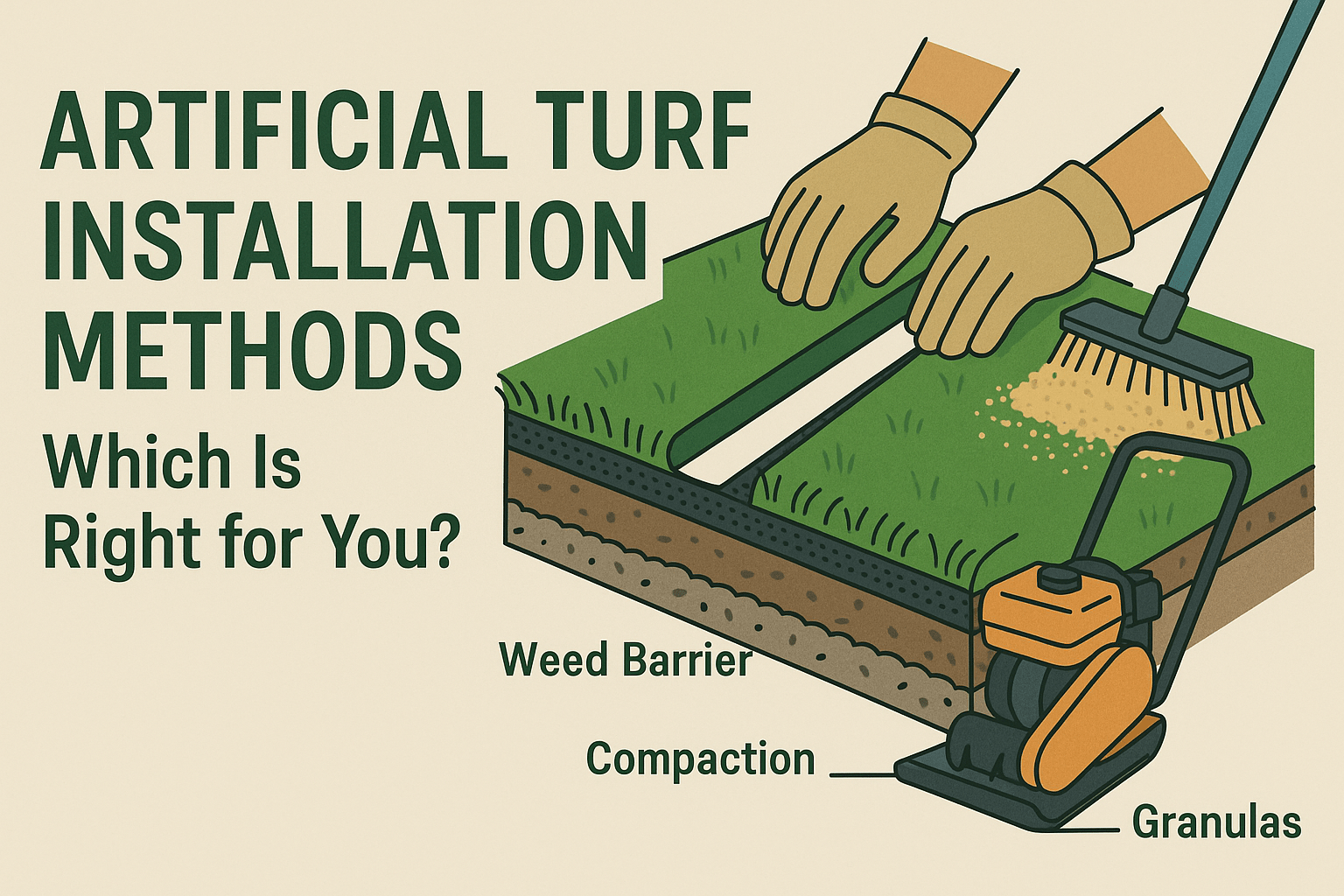Many people want to make their homes and yards better for the planet. One option that’s getting a lot of attention is eco friendly artificial grass. It looks like real grass, but it doesn’t need water or mowing.
Some people think it helps the environment. Others aren’t so sure. Is it really better than natural grass? Does it save water and reduce pollution?
In this article, we’ll look at what eco friendly artificial grass really is. We’ll compare it to natural grass, talk about the pros and cons, and help you decide if it’s the right choice for your yard.
What Is Eco-Friendly Artificial Grass?
Eco friendly artificial grass is a type of fake grass made to be safer for the planet. It looks like real grass but is made from things like recycled plastic, rubber, or even plant-based materials like soybean oil or sugar cane.
Unlike older types of synthetic turf, this newer version uses non-toxic materials. That means fewer toxic chemicals that can harm kids, pets, or the soil. Some types also use organic materials and are built to last longer, which means less waste over time.
The goal is to give people a sustainable alternative to a regular lawn—something that looks green but doesn’t need much care or water.
Comparing It to Natural Options
When thinking about eco friendly artificial grass, it helps to compare it to natural grass or real grass.
Natural grass needs a lot of care. You have to mow it, water it, and sometimes use harmful pesticides to keep bugs and weeds away. In hot places, you may even need daily watering just to stop it from turning brown.
Eco friendly artificial grass doesn’t need lawn mowers, leaf blowers, or spraying with chemicals. It stays green all year and doesn’t get muddy after rain. It also won’t wear out as quickly in high-traffic areas, like a backyard where kids or pets play every day.
But some people still prefer natural lawns because they feel softer, help cool the air, and support bugs and plants.
So, the best choice depends on what matters most to you—easy care or keeping things natural.
Water Savings: Is It That Big of a Deal?
Yes, it can be. Eco friendly artificial grass uses almost no water. That’s a big deal, especially in places with dry weather or water bans.
A real grass lawn needs a lot of water—sometimes thousands of gallons of water each year. This leads to higher water bills, wasted water, and even stress on local water systems.
With fake grass, you don’t need regular watering. You may spray it down once in a while to clean it, but that’s all. It’s great for arid regions where grass won’t grow well anyway.
Saving water helps not just your wallet but the planet too. Using less water supports water conservation and protects clean water for the future.
Health and Safety: Are There Any Risks?
People often ask if eco friendly artificial grass is safe. The good news is, newer types are made with safer materials. Many brands now use non-toxic materials and avoid toxic chemicals.
That means it's usually safe for kids, pets, and anyone who spends time outside. Some even help lower the chance of common allergens, like pollen, getting into your yard.
But there are still a few things to watch out for. Some cheaper fake grass may contain harmful chemicals. Others can get very hot in the sun and cause turf burns if you walk on them barefoot.
Also, since fake grass doesn’t grow, it doesn’t clean the air like natural grass can. So while it’s safe to use, it’s important to pick a high-quality type and think about where you place it.
Environmental Impact: Helping or Harming?
Some people think eco friendly artificial grass helps the planet. Others say it causes problems. So, what’s the truth?
On the good side, it cuts down on carbon emissions. You don’t need lawn mowers or leaf blowers, which burn fossil fuels and create noise pollution. It also helps stop soil erosion and keeps yards green without using water.
But there are downsides too. It’s made from synthetic materials, like plastic, which can take a long time to break down. Some types may still release small amounts of chemicals over time. And because it doesn’t support insects or plants, it doesn’t help air quality the way natural grass lawns do.
Environmental Impact: Helping or Harming?
One clear benefit is lower carbon emissions. You won’t need lawn mowers or leaf blowers, which run on fossil fuels and cause noise pollution. It also helps prevent soil erosion and keeps your yard green without using much water.
But it’s not perfect. Most artificial grass is made from synthetic materials, like plastic. These take many years to break down. Some types may even let out small amounts of chemicals as they age. And since fake grass doesn’t support bugs or plants, it doesn’t improve air quality the way natural grass lawns do.
Where It Works Best: Ideal Uses
Eco friendly artificial grass isn’t for every yard, but it works great in some places.
It’s a smart pick for high-traffic areas, like playgrounds, dog runs, and backyards where people walk or play often. Real grass can wear out or turn muddy in these spots. Fake grass gives a clean, stable surface that stays the same all year.
It’s also helpful in dry or hot places where real grass doesn’t grow well. If you live in a place with water rules or drought, it saves time and water.
Some people use it in small outdoor spaces, like patios, rooftops, or balconies. It adds green without the work of mowing or watering. It’s also common in sports fields, where players need a smooth, level surface that holds up during games.
Cleaning and Maintenance
One reason people like eco friendly artificial grass is because it’s easy to take care of.
You don’t need to mow, water, or add plant food. That means less work and no need for gas or electric tools. This also cuts down on noise and air pollution.
To keep it clean, just rinse it with water now and then. If it gets dirty, use a mild detergent and a soft brush. You can also remove leaves or trash with your hands or a rake.
Make sure your yard has adequate water drainage, especially if it rains a lot. This helps stop puddles and keeps the grass in good shape. If you live near storm drains, check that they don’t get blocked by dirt or grass fibers.
Is It Really Eco-Friendly? A Closer Look
Some people ask if eco friendly artificial grass is truly good for the planet. The answer depends on how it’s made and how it’s used.
Good brands now use non-toxic materials and even some organic materials like soybean oil or sugar cane. These help lower harm to the earth. Some types are also made from recycled plastic, which cuts down on excess material going to landfills.
It also supports water conservation efforts, which is helpful in places with water scarcity or drought. And since it doesn’t need mowing or spraying, there’s less use of gas and chemical treatments.
But keep in mind—it’s still made from man-made stuff. Some artificial turf installations may involve glues or infill that can leak into the soil if not done right. Choosing better products and safe infill materials is important.
So yes, it can be eco-friendly—if you choose the right kind and install it carefully.
Is Eco-Friendly Artificial Grass Worth the Hype?
After looking at the facts, eco friendly artificial grass does offer real value—if you choose it for the right reasons.
It saves thousands of gallons of water every year. It works well in dry places and cuts down on mowing, spraying, and waste. Many families also like that it’s clean, strong, and safe for kids and pets.
But the hype only matches reality when you pick good-quality turf made with care. Look for options that use non-toxic materials, offer water drainage, and come from trusted sources.
Brands like LITA focus on these things. They offer grass that’s simple, clean, and built to last. If you’re looking for low-hassle green space, it might be a helpful place to start.
The hype makes sense when the product matches your needs.
Final Thoughts
So, is eco friendly artificial grass really worth it?
For many people, the answer is yes. It saves water, needs little care, and stays green all year. It works well in dry places, small yards, and busy outdoor spaces. New types use safer, non-toxic materials and help lower your carbon footprint.
But eco friendly artificial grass isn’t perfect. It’s still made from man-made stuff and doesn’t support bugs, plants, or the air like natural grass does. So it may not be the best choice for people who want a fully natural yard.
If you’re ready to save water, cut down on yard work, and keep your outdoor space looking fresh year-round, eco-friendly artificial grass might be the right step. Take a moment to explore LITA’s options and find the turf that fits your life, your yard, and your values.



Leave a comment
This site is protected by hCaptcha and the hCaptcha Privacy Policy and Terms of Service apply.